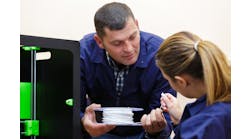While most Telcos budget for hardware, test set, and training, budgets for FTTH, copper remains a critical piece of the network today, and will into the future as new technologies extend the life of copper allowing Telcos to serve a broad audience with affordable bandwidth solutions. Unfortunately, copper is seen as an old product and technology, and is often ignored by many companies and therefore not well supported. This article should provide a good tutorial for those who are left maintaining the copper infrastructure.
The biggest issue for copper was, and is, the existing cable plant. It is an assortment of different types of cables in both the underground and distribution plant. Locating and maintaining the diverse types of copper cables requires complex construction, installation, and maintenance procedures. Also, more thorough testing needs to be done to qualify the circuits and to correct design faults.
InvisiLight® Solution for Deploying Fiber
April 2, 2022Go to Market Faster. Speed up Network Deployment
April 2, 2022Episode 10: Fiber Optic Closure Specs Explained…
April 1, 2022Food for Thought from Our 2022 ICT Visionaries
April 1, 2022PROBLEM #1: The first telephone cables were lead sheath with longitudinal wrapped paper insulated conductors.
Because of their poor longitudinal balance, customers complained of noise on the lines from the power company. Around 1910 the industry shifted to spiral wrapped paper insulated conductors. These circuits served the industry well, but complaints from cross talk or AC signal interference from other circuits (disturbers) forced the industry to change cable make up again.
SOLUTION
Cables placed prior to 1930 will function fine for Plain Old Telephone Service (POTS) circuits, but will not fare well in the digital environment. Replace them!
PROBLEM #2: In the early 1930s, the industry shifted to pulp cable manufacture with unit type construction.
A staggered twist arrangement on the variegated groups of circuits within a group cut down cross talk. Early splicing techniques used a twisted splice and then soldered. A paraffin sleeve insulated the splice. The expense of twisting and soldering eliminated the solder. The twisted splice held up for voice grade service, but complaints of static on the line continued because of series resistance.
SOLUTION
The solution is mechanical splicing technique. Mechanical connectors such as the 3M Scotchlok or the PICKABOND connector provided a zero-ohm splice connection. Most of these older cables are found in the feeder plant. When the circuits are used for digital transport, they will function quite well because of random splicing techniques, but re-splicing the cables must be done to eliminate any old twisted splices with series resistance. When testing for series resistance, short and ground the circuit on one end. Any series resistance will stress high on a signal-to-noise test. When the pair fails the longitudinal balance test, a VOM will identify which side of the conductor shows the series fault. A Time Domain Reflectometer (TDR) will show footage to the culprit splice.
PROBLEM #3: In order to transport narrowband signals farther than 18,000 feet, load coils were added to offset cable pair capacitance.
For voice grade service and analog transport, these load coils were specifically placed with acceptable end section. Addressing was done through pulse dialing, and unless the customer complained of volume or distortion, little emphasis was placed on circuit design. When the touch pad was invented in the early 1960s, half of them did not function properly due to poor circuit design.
THE TEMPORARY SOLUTION
The trained field technician, using a transmission test set, identified and corrected circuit design faults. Over a period of several years most circuits were corrected to the point where the touch pad would function. On a new install or repair, if the technician could draw and break dial tone to a quiet line termination with no background noise, the transmission test was eliminated. Once no one could solve a repeat circuit design fault, the knowledgeable technicians broke out their transmission test set. Gradually, along came additional end-user equipment starting with the FAX machine, caller ID, modems, high-speed Internet, etc. Often user equipment didn’t work, or couldn’t be depended upon for regular service because circuits were running at lower speeds.
SOLUTION
Managers and technicians in the industry must understand circuit design for all types of service and how to test for circuit design faults. Faults that affect an entire cable compliment need to be fixed in mass rather than one pair at a time. Any DSL transport requires the elimination of the load coil. Most multi-functional test sets in the field will identify and count the number of load coils on a circuit, and a TDR will show the distance to any unknown load coil for removal.
PROBLEM #4: Plastic Insulated Conductor (PIC) cable was introduced in the late 1950s, and many versions are in use today.
Many PIC sections of cable have water in the sheath. Filling compounds have solved the water intrusion problems, but far too many terminals, pedestals, splices, and access points, are in disarray, many with water present.
SOLUTION
Any section of air-core cable with water present must be replaced as soon as possible. Water drastically changes the capacitance of telephone cables. Capacitance between circuits is completely shorted out and adjacent circuits will disturb each other.
Defective terminals, pedestals, splices, and access points, need to be rebuilt and cable pair counts upgraded where necessary. Fixed-count terminals should be locked up to prevent trouble caused by activity.
PROBLEM #5: Many of the larger telephone companies used multiple distribution plant.
Cables were bridged with 3-way splices so the circuit could be used at more than one location. Laterals or bridge-tap have an adverse effect on digital transport.
SOLUTION
The most logical solution is to remove any bridge-tap or lateral. However, for many of the large operating companies this is impractical and may be impossible. An alternate solution is the dedicated terminal that eliminates the wire beyond the terminal when the drop is installed. The pair is cut back through when the drop is removed.
EQUIPMENT
The solutions may sound relatively simple but the key to fast, efficient copper cable upgrades and repairs is to provide the technicians with the best equipment and adequate training on that equipment.
I recommend all technicians have a toolbox that includes: a multi-function test set with narrow band and bandwidth testing capabilities, a quality cable locator, and an earth gradient device to pinpoint buried cable faults.
IN CONCLUSION
Bandwidth and IoT circuits require the following characteristics on any cable pair:
• Remove all load coils.
• Remove all bridge-tap.
• Fix all DC type faults.
• Fix all split cable pairs.
• Test for good longitudinal balance.
• Identify and fix any series resistance.
If your pair meets the listed requirements, it will transport any bandwidth or IoT circuit to the distance advertised by its vendor.
Like this Article?
Subscribe to ISE magazine and start receiving your FREE monthly copy today!
Signing Off
I am looking for inspiration — help me out! What would you like me to write about that might help you with tough cases of trouble? Do you have a tip that could help other technicians solve their challenges? Call or text or email your thoughts: 831.818.3930 or [email protected].









